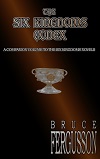Remember that aptitude test we took early on in high school to find out what we’re good at? Maybe the test was a help for some, but by then I had a pretty good idea of the direction I was going because of the crocodile behind the sofa.
Years before, my parents surely had no idea that letting their very young son see Peter Pan would unleash a lurking aptitude. Seeing Captain Hook’s terror at the lurking crocodile that had long since digested his hand but not the alarm clock–tick-tock, tick-tock–sealed my fate. I became convinced there was a crocodile behind the sofa near the front door to our house, so I’d take a safer route to go outside and play. This soon exasperated my father–a WW II Marine veteran of Okinawa–who had to be worried his son was going to grow up to be a scaredy-cat. One evening he decided enough was enough, took the reptile by the tail and ceremoniously tossed it out the front door.
Problem solved–until I saw Invaders from Mars, in which the Martians implanted mind-control crystals in the backs of peoples’ necks, part of their plan to conquer the world, one 50s suburb at a time. Clever movie, billed as the ‘anti-Oz‘, because at the end you were supposed to wonder if it all had been a dream or really happened. Well, it didn’t matter for me. I became convinced, just as the boy in the movie did, that my parents had been taken over. I wouldn’t let my mother come into my room to kiss me good night until she showed me the back of her neck.
By the time I was a teenager, my fascination with what once was, what might have been, what could be, extended well past the usual comic books to UFOs, Atlantis, King Arthur, castle ruins–pretty much anything that needed the propellent of imagination. A family ‘roots’ vacation to the U.K. added octane to the fuel. (My older sister dumped us to go live in London and get a job in a Carnaby Street boutique, but that’s another story). We visited the old Norman church where an ancestor had been a deacon–the same church and village mentioned in R.D. Blackmore’s classic Lorna Doone. Nearby Stonehenge was a mid-summer gimme, so my father and I got up early on the solstice morning to watch the sun rise directly over the heelstone, a nifty trick for the supposedly dumb Neolithic guys who built the place without the help of ancient astronauts.
A BBC crew was already there, filming a kid’s show called Blue Peter–named after a small flag you raise on your boat, to signify that you’re leaving port–the outward bound thing. There were lots of folks dressed up in white robes, Druidic costumes we were told. Surely these Brits knew that the Druids had nothing to do with Stonehenge, but hey, a show’s a show, whether you’re in Hollywood or southern England–and we were Yanks getting in the way. I pleaded to stay and so my long-suffering father–I’m sure he would have preferred to go back to the George and Dragon Inn and get some sleep–managed to convince the director to let us remain hidden by a huge sarsen stone and watch the BBC Druids parade around the heelstone in a bizarre tribal war-dance as the camera rolled.
So what’s a kid supposed to do with an aptitude for feral imagining that convinces him there’s a crocodile behind the sofa? Well, the least I could do was thank my father by adapting his inspired problem-solving for a scene in The Shadow of His Wings, the first novel in my Six Kingdoms fantasy series. Next month, the second–The Mace of Souls–will be reissued as an e-book like the first, also with a new Joe Calkins’ cover. And what else could the mace of the title be made of but crystal? Heck, even Martians know that crystal is useful for other things besides setting a table with fancy glasses that ping when you thump them, or building a pyramid beneath the waters of the Caribbean.
The third, newest and longest novel in the series, Pass on the Cup of Dreams, is set for publication in October. There’s no Stonehenge-like edifice in it–well, not exactly–but there is a double-headed axe some of the characters use. Back when you could actually stick around Stonehenge to watch a kid’s show being filmed, you could see a faint, carved impression of the iconic Mycenean (or Minoan) double-headed axe on one of the standing stones. Those guys had once been there too, a long way from home, for the copper in the area, if not a solstice parade.


